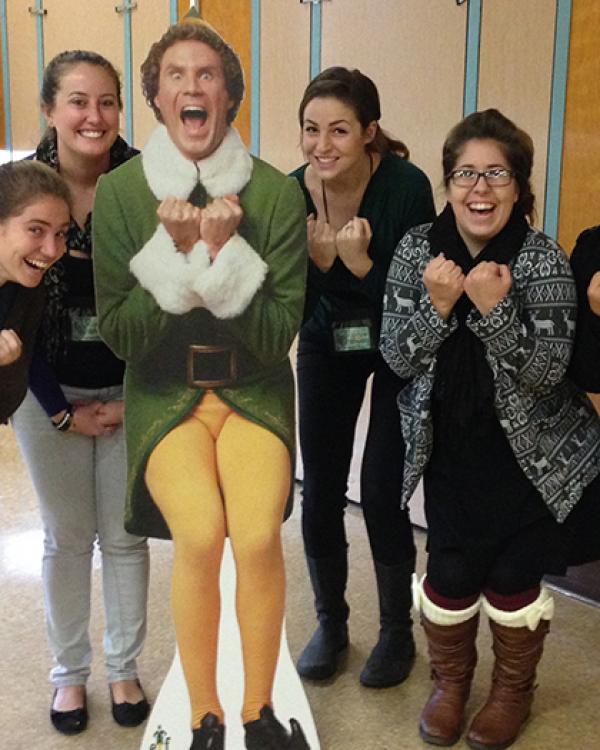
Aria Bauman (r of the Will Ferrell cutout) and her fellow TEP La Colina Cohort in 2014
On the Alumni News Page of the site we run a full story with Aria Bauman ('15, SST, M.Ed.), but here is the opening section of the story that concerns how she is dealing with teaching her high school biology classes remotely because of COVID-19.
Part of what drew high school science teacher Aria Bauman to the classroom is that every day is different. “You get to problem solve on your feet,” she says. “It never gets boring. You never know what to expect.”
Case in point: coronavirus. The disease has created an unexpected turn of events for teachers, who must quickly switch to remote instruction. Fortunately for Bauman, a 2015 graduate of the Teacher Education Program (TEP), her transition to teaching online has been smooth, in part thanks to the training she received at UC Santa Barbara.
“[The TEP] builds your toolbox,” Bauman says. “Even though you know generally how to react in a situation, [the program] gives you more things to pull out in response to challenges.” One such tool was digital literacy in the classroom. Through classes focused on incorporating technology into instruction, Bauman was able to practice building websites and creating blended (i.e. part digital) lessons, particularly useful skills in the face of coronavirus.
With the closure of the high school building where she teaches biology, Bauman has had to adapt her curriculum on the fly as she migrates online.
All things considered, Bauman says she thinks remote instruction is going pretty well. She’s getting better at choosing the online simulations she uses to replace in-person labs and at writing clear and concise instructions. Her digital literacy and technology troubleshooting skills are improving, and she plans to incorporate some of these virtual activities into her curriculum in the future.
“The most frustrating part,” she says, “is that I got into this profession because I wanted to be here to support students and to interact with them, and now the only interactions are virtual. The distance is challenging.” Moreover, “the students are starved for social interaction.”
In response to these challenges, Bauman is focusing on using Zoom more effectively and working peer-to-peer collaboration into her curriculum. She recently received permission to teach from her classroom, so she also hopes to get students involved by Zooming with her class while she conducts labs.
A the least, the students learning from their homes does allow for levity, like sharing jokes at the beginning of Zoom sessions and hosting pet show-and-tells.
“I really think humor, exuding positivity, and being flexible are the best ways to keep students engaged,” Bauman says. “Different kiddos have various challenges in these crazy times, so it is really important to make them all feel supported and heard.”